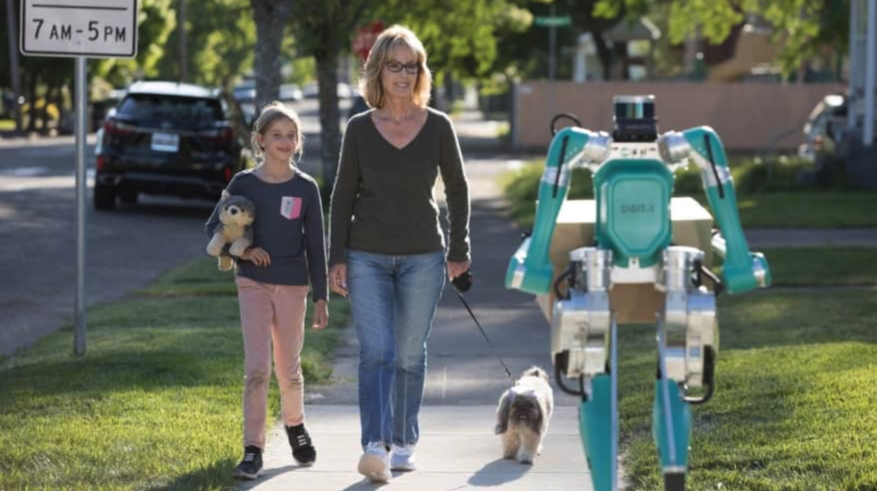Ford Motor Company is partnering with a robot manufacturer to pair its self-driving cars with advanced, humanlike robots to bring packages right to the front door of anxiously waiting customers. Its new partnership with Agility Robotics is focused on new ways of making deliveries, specifically tackling that difficult last step of bringing goods from the driverless car to your door.
“A ride-hailing trip could double as a delivery service, dropping off packages in between transporting passengers,” Washington said. “And as we’ve learned in our pilot programs, it’s not always convenient for people to leave their homes to retrieve deliveries or for businesses to run their own delivery services. If we can free people up to focus less on the logistics of making deliveries, they can turn their time and effort to things that really need their attention.”
The star of the test is Digit, a two-legged robot designed and built by Agility that’s not only built to approximate the look of us humans, but to walk like us, too. Built from lightweight materials and capable of lifting packages up to 40 pounds, Digit can go up and down stairs, walk naturally over uneven terrain, and react to things like being bumped without losing its balance or load. Digit has another trick up its titanium sleeves, the ability to fold itself up for easy storage in the back of a self-driving vehicle until it’s needed to bring a package to its destination.
Outfitted with a LiDAR and a few stereo cameras, Digit has just enough sensory power to navigate through basic scenarios. If it encounters an unexpected obstacle, it can send an image back to the vehicle and have the vehicle configure a solution. The car could even send that information into the cloud and request help from other systems to enable Digit to navigate, providing multiple levels of assistance that help keep the robot light and nimble. Digit’s light weight also helps ensure it has a long run time, which is essential for delivery businesses that will be operating most of the day.
Gaining access to a customer’s door often requires walking through obstacles, including stairs and other challenges like toys in the yard, which can be hard for robots with wheels to do since only about 1 percent of homes in the United States are wheelchair-accessible, according to the Department of Housing and Urban Development. Digit has been designed to walk upright without wasting energy, so it has no issue traversing the same types of environments most people do every day.
As mentioned by Thomas Walsh, Ford’s Head of Autonomous Vehicle Partnerships, at the 2019 Food On Demand Conference, Ford aims to deliver its first self-driving vehicles for commercial applications in 2021. That aggressive timeline is but a blink of a robot’s artificial eye.
Check out this YouTube link to see Digit in action—including a creepy robot-human fist bump:
https://www.youtube.com/watch?v=WHWciIxNK2c&feature=youtu.be


